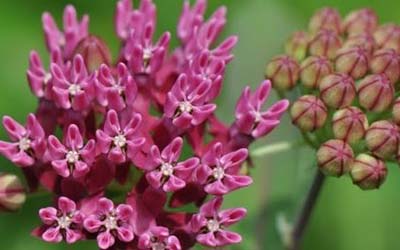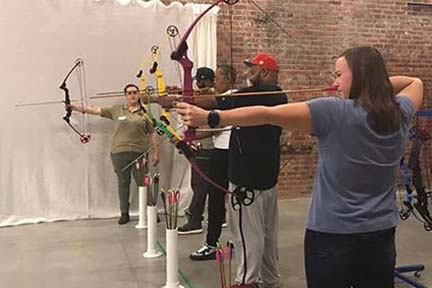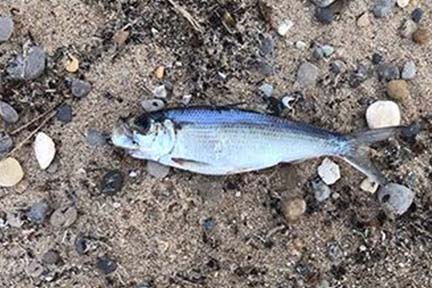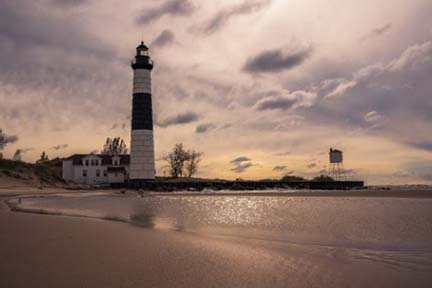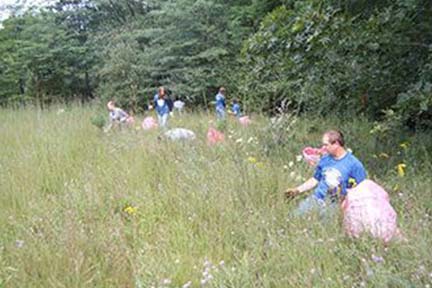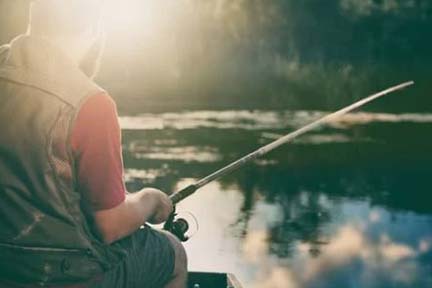Here are a few ways to get involved in taking care of Michigan’s natural resources in June. For more opportunities to volunteer, contribute and provide input, visit Michigan.gov/DNRVolunteers.
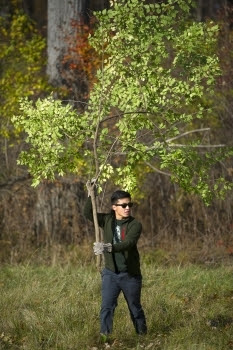 Several state parks in southern Michigan will host volunteer stewardship workdays in June. Volunteers are needed to help with removing invasive plants that threaten high-quality ecosystems or collecting native seeds for prairie restoration. Several state parks in southern Michigan will host volunteer stewardship workdays in June. Volunteers are needed to help with removing invasive plants that threaten high-quality ecosystems or collecting native seeds for prairie restoration.
Please note that registration is required for all volunteer workdays.
Workdays will take place:
- Saturday, June 4, 10 a.m. to 1 p.m. at Brighton Recreation Area (Livingston County)
- Sunday, June 5, 10 a.m. to noon at Saugatuck Dunes State Park (Allegan County)
- Friday, June 10, 1 to 4 p.m. at Waterloo Recreation Area (Washtenaw County)
- Saturday, June 11, 10 a.m. to 1 p.m. at Highland Recreation Area (Oakland County)
- Saturday, June 11, and Saturday, June 25, 10 a.m. to noon at Warren Dunes State Park (Berrien County)
- Sunday, June 12, and Saturday, June 26, 9 a.m. to noon at Fort Custer Recreation Area (Kalamazoo County)
- Tuesday, June 14, 4 to 6 p.m. at Bald Mountain Recreation Area (Oakland County)
- Saturday, June 18, 10 a.m. to noon at Muskegon State Park (Muskegon County)
- Saturday, June 25, 10 a.m. to 1 p.m. at Island Lake Recreation Area (Livingston County)
More details about each workday can be found on the DNR volunteer events calendar. |
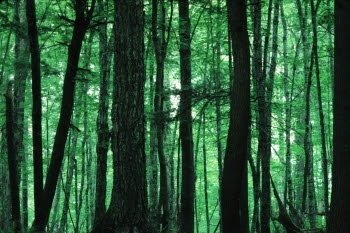 It’s time to talk about your state forests. It’s time to talk about your state forests.
Prescribed burns, timber harvests and other activities are carefully planned to keep Michigan’s nearly 4 million acres of state forest healthy and thriving.
Plans for these activities are currently being made for 2024, but public comment is welcome now, before those plans are finalized. In-person open houses were suspended during 2020 and 2021 due to the COVID-19 pandemic. Many forest management units are returning to in-person open houses this season; you may also comment online or in writing.
To find out what activities are planned, choose the geographic area you are interested in on the interactive map. Submit online comments through the map during designated 30-day periods. If you’d prefer to attend an open house in person, scheduled dates are listed below.
Once public comment has been received, a meeting called a compartment review is held. That’s where plans are finalized. Contact the unit manager for details on how to attend an in-person open house or compartment review. The DNR’s Forest Resources Division welcomes public comment on all forest activities.
Units with comment periods in June are:
- Atlanta: Comment period is June 12-July 12; open house is July 12; compartment review is Aug. 4. Contact Cody Stevens, 989-785-4251.
- Gaylord: Comment period is through June 16; open house is June 15; compartment review is July 14. Contact Lucas Merrick, 989-732-3541, ext. 5440.
- Gladwin: Comment period is June 13-July 13; open house is July 13; compartment review is July 19. Contact Patrick Mohney, 989-426-9205, ext. 7640.
- Pigeon River: Comment period is June 20-July 20; open house is July 20; compartment review is Aug. 16. Contact Mark Monroe, 989-983-4101.
- Traverse City: Comment period June 6-July 7; open house is July 6 in Traverse City and July 7 in Kalkaska; compartment review is July 12. Contact Dave Lemmien, 231-922-5280.
See all scheduled comment periods, open houses and compartment review meetings for the 2022 season. |
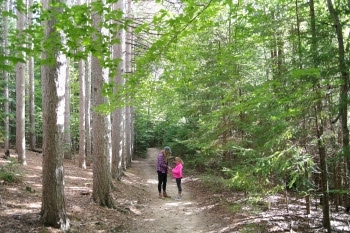 The DNR is hosting virtual public meetings to provide information on the state land review process and opportunities for feedback on recommendations on whether to keep, exchange or sell DNR-managed public land in 10 counties: Delta, Kent, Livingston, Menominee, Montcalm, Oakland, Ogemaw, Oscoda, Saginaw and Tuscola. The DNR is hosting virtual public meetings to provide information on the state land review process and opportunities for feedback on recommendations on whether to keep, exchange or sell DNR-managed public land in 10 counties: Delta, Kent, Livingston, Menominee, Montcalm, Oakland, Ogemaw, Oscoda, Saginaw and Tuscola.
The state land review stems from the 2013 DNR-managed public land strategy and involves review of certain parcels of state land to determine whether they are contributing strongly to the department’s mission. The review process involves DNR-managed lands that are 200 acres or less in size or that, due to an irregular boundary, may be difficult to manage.
The meetings will be held:
- Wednesday, June 15, at 6 p.m. – Join Microsoft Teams meeting or call (for audio only) +1 248-509-0316, 631562135#, Conference ID: 631 562 135#
- Thursday, June 16, at 2 p.m. – Join Microsoft Teams meeting or call (for audio only) +1 248-509-0316, 66705848#, Conference ID: 667 058 48#
Participate in either meeting by following the given Microsoft Teams link. You don’t have to have Microsoft Teams on your computer or smart device to join, but please note that each link is specific to its meeting date and time, and the links will not be live or accessible until each meeting is “opened” by the moderator. Anyone without access to a computer may call in using the phone number provided.
Visit the DNR’s land review webpage for more information or contact Kerry Heckman at 517-643-1256. |
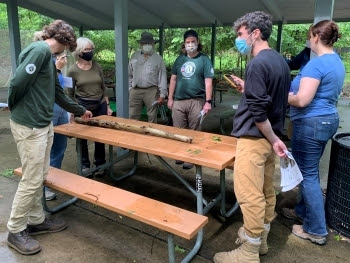 For over 10 years, scientists have been assessing large, resilient ash trees for their tolerance to the invasive emerald ash borer, but they need your help to find more of these lingering ash trees in forested areas. Finding more of these trees will improve the USDA Forest Service ash breeding program, which is breeding native ash for increased resistance. For over 10 years, scientists have been assessing large, resilient ash trees for their tolerance to the invasive emerald ash borer, but they need your help to find more of these lingering ash trees in forested areas. Finding more of these trees will improve the USDA Forest Service ash breeding program, which is breeding native ash for increased resistance.
You could find the next ash tree for the breeding program by searching in public forested areas or your own woodland. The DNR is hosting an event to help you learn how.
Lingering Ash Tree Training Workshop:
Thursday, June 9, 6 to 8 p.m.
Maybury State Park, 49601 Eight Mile Road, Northville
Meet at the Hickory Shelter
Friday, June 10, 6 to 8 p.m.
P.J. Hoffmaster State Park, 6585 Lake Harbor Road, Muskegon
Meet at the Picnic Shelter
This training is open to forestry professionals, community volunteers and private woodland owners. It will focus on lingering ash found in either public or private forested settings. Resources related to private woodland management will be shared, but the training will focus on the background story of lingering ash, how to identify ash trees, how to survey public areas or your own forested land, and how to identify and report lingering ash.
We will cover how to report your findings with or without smartphone apps TreeSnap, Avenza and Anecdata. If the location allows, we will go on a walk to see a remnant ash population.
Please contact Kelsey Dietz at [email protected] with any questions. Preregistration by emailing Kelsey is preferred. The workshop will be held outdoors under a covered shelter. |
 Sometimes the first step to getting involved is experiencing the resources for yourself! If you’re new to fishing, ORVing or exploring state parks, next weekend could be a good start to seeing all of Michigan’s valuable natural resources and great recreation opportunities and why the DNR, many partners and volunteers work so hard to keep our outdoor places healthy and beautiful. Sometimes the first step to getting involved is experiencing the resources for yourself! If you’re new to fishing, ORVing or exploring state parks, next weekend could be a good start to seeing all of Michigan’s valuable natural resources and great recreation opportunities and why the DNR, many partners and volunteers work so hard to keep our outdoor places healthy and beautiful.
“Three Free” weekend – two full days when residents and visitors can fish, ride Michigan’s off-road trails or visit state parks and state-managed boating access sites at no cost – is set for Saturday, June 11, and Sunday, June 12.
The weekend includes:
- Free fishing. Grab your gear and cast a line! Twice a year, you can enjoy two days of fishing without a license. All other regulations still apply.
- Free ORV riding. Ride more than 4,000 miles of state-designated ORV routes, trails and scramble areas. No ORV license or trail permit required.
- Free Passport. The Recreation Passport requirement is waived, so you can build state parks and boating access sites into your itinerary.
While you’re out exploring, avoid giving invasive species a ride by cleaning mud, seeds and debris from vehicles, gear and clothing. Clean, Drain, Dry watercraft and trailers. Find more ways to take action at Michigan.gov/Invasives.
If the weekend inspires you to give back, check out Michigan.gov/DNRVolunteers to see which opportunities are right for you! |
|
|
The December 2021 discovery of didymo, an aquatic nuisance algae species also known as “rock snot,” in Michigan’s Upper Manistee River is a cause for concern for all river and stream users. Join us for the NotMISpecies webinar “Didymo: What you need to know” from 9 to 10 a.m. Thursday, June 9. It will provide an overview of didymo’s ecology, potential impacts on cold-water organisms, and what researchers are doing to better understand its spread, impacts and potential triggers. |
|
Looking for a summer job with flexible scheduling, a woods-and-water workplace and the chance to make memories with a great team? We’ve increased the starting hourly rate for seasonal state park workers to $15, and we’re looking for about 400 more people to to complete the ranks of the 1,300 workers needed every year to meet the needs of the summer travel season. Get started by expressing your interest at the seasonal park workers webpage or by texting “Hire” to 80888. |
|
|
